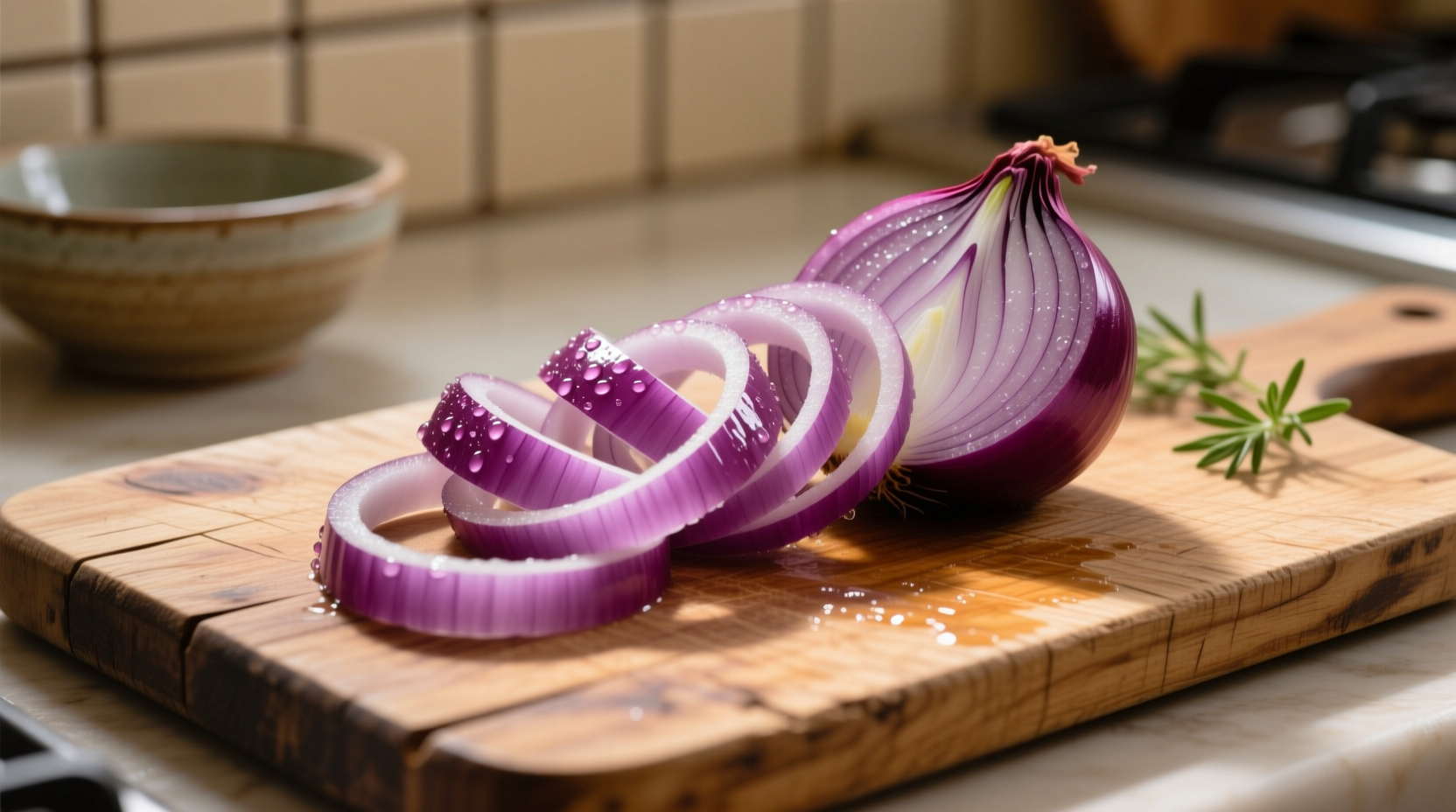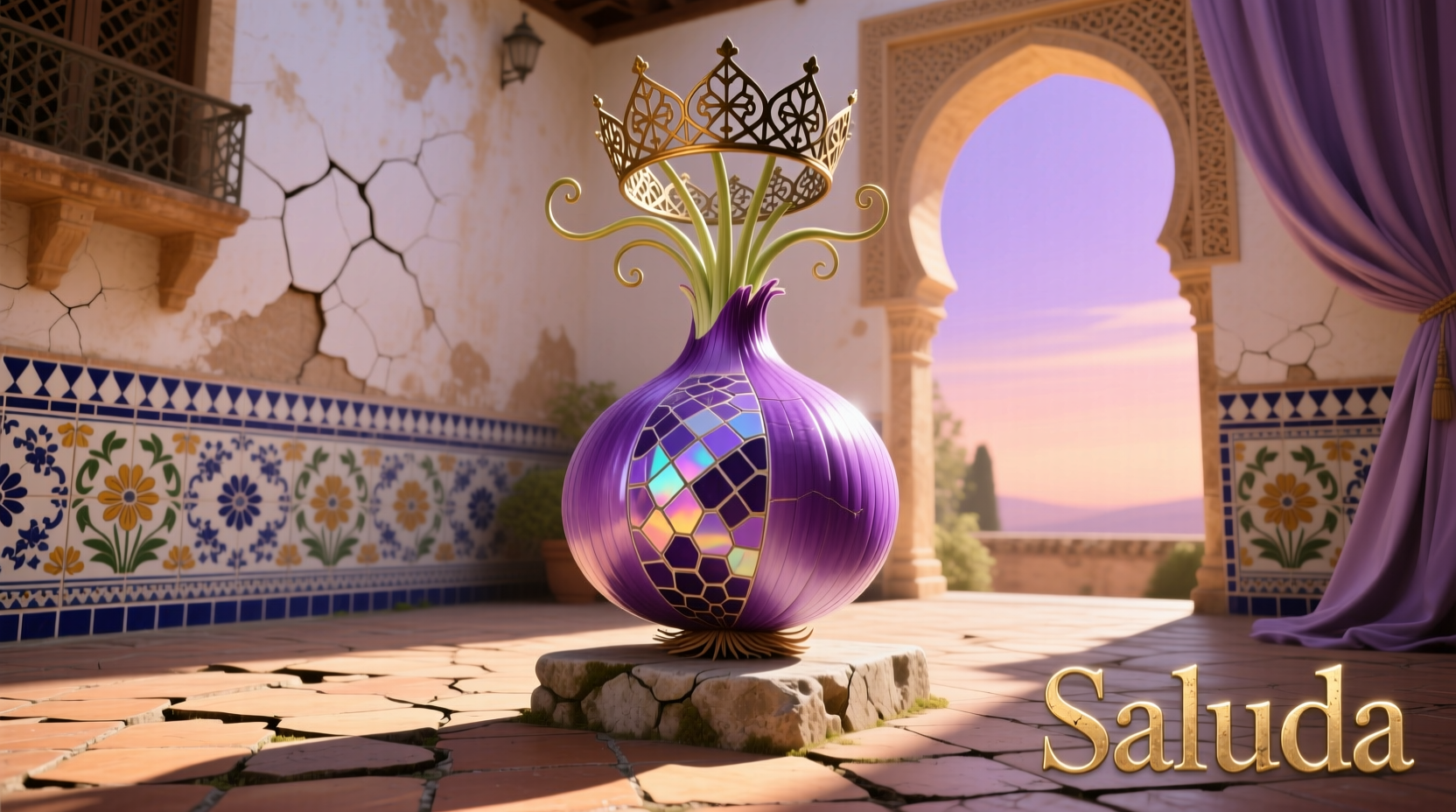For home cooks and culinary enthusiasts seeking authentic regional ingredients, understanding the unique characteristics of the purple onion saluda provides valuable insight into Southern Appalachian food traditions. This specialty onion, grown primarily in Polk County, North Carolina, offers a distinctive flavor profile that sets it apart from commercial purple onion varieties found in supermarkets nationwide.
What Exactly Is Purple Onion Saluda?
The purple onion saluda represents a regional heirloom variety cultivated in the fertile soils of Saluda, North Carolina, and surrounding Polk County. Unlike mass-produced purple onions, this variety developed through generations of selective breeding by local farmers adapting to the specific microclimate of the Blue Ridge foothills. The onions feature deep violet-purple outer skin, crisp white flesh with distinctive purple veining, and typically grow to 2-3 inches in diameter with a flattened spherical shape.
Grown primarily during the spring and summer months, purple onion saluda reaches peak harvest from late May through July. Local farmers note that the unique mineral composition of Polk County's soil contributes to the onion's characteristic flavor balance—less pungent than standard purple varieties but with more complexity than sweet onions.
| Characteristic | Purple Onion Saluda | Standard Commercial Purple Onion |
|---|---|---|
| Flavor Profile | Balanced sweet-sharp with subtle earthy notes | More pungent, sharper bite |
| Storage Life | 3-4 months under proper conditions | 4-6 months |
| Soil Preference | Well-drained loam with moderate acidity | Broad soil adaptability |
| Primary Growing Region | Polk County, North Carolina | Nationwide commercial production |
Historical Development of This Regional Variety
The cultivation history of purple onion saluda reveals how regional agricultural practices shape distinctive food varieties. Local agricultural records from the Polk County Cooperative Extension Office document its evolution:
- Early 1900s: Appalachian settlers brought European onion varieties to the region, adapting them to local conditions
- 1930s-1940s: Selective breeding during the Great Depression focused on varieties that stored well through winter months
- 1970s: Local farmers began documenting the distinctive purple-skinned variety that would become known as "saluda"
- 2005: Polk County officially recognized the purple onion saluda as a heritage crop
- Present: Approximately 15 local farms in the Saluda area maintain cultivation of this heirloom variety
According to the USDA National Agricultural Statistics Service, specialty onion production in Polk County represents less than 0.5% of North Carolina's total onion output, highlighting its niche status as a regional specialty.
Practical Applications in the Kitchen
Chefs specializing in Appalachian cuisine value purple onion saluda for its versatile flavor profile that works across multiple cooking methods. Unlike more pungent purple onions, this variety maintains its structural integrity when cooked while offering visual appeal with its distinctive purple streaking.
Raw applications where purple onion saluda shines:
- Thinly sliced in heirloom tomato salads with local apple cider vinegar
- Quick-pickled for Southern-style charcuterie boards
- Finely diced in pimento cheese recipes for added color contrast
- Raw in fresh salsas where milder onion flavor complements tomatoes
Cooked applications that highlight its unique qualities:
- Caramelized slowly for Southern onion gravy served over biscuits
- Roasted with heritage pork for regional main dishes
- Grilled whole as a side dish with regional spice rubs
- Added late in stews to maintain texture and color

Where to Find Authentic Purple Onion Saluda
Due to its limited production area, finding authentic purple onion saluda requires knowing where to look. The variety's regional specificity creates both challenges and opportunities for sourcing:
Local availability (Saluda, NC area):
- Saluda Farmers Market (Saturdays May-October)
- Polk County Produce Auction (Tuesdays during harvest season)
- Direct from participating farms through farm stands
Regional availability:
- Select specialty grocers in Asheville and Greenville areas
- Some farm-to-table restaurants in Western North Carolina
- Limited availability at regional farmers markets during peak season
Important limitations to understand:
- Not available year-round (primarily May-August harvest)
- Rarely shipped outside the Southeast due to perishability
- Often sold out quickly at local markets during peak season
- Not typically found in chain grocery stores
For those outside the region, the closest substitutes would be other heirloom purple onions like Red Wethersfield or Stuttgarter varieties, though these lack the specific flavor profile developed in Saluda's unique terroir.
Growing Purple Onion Saluda at Home
Gardeners interested in cultivating this regional specialty should understand its specific growing requirements. While challenging to replicate the exact Saluda conditions, home growers can approximate the growing environment:
- Plant sets in early spring after last frost date
- Requires well-drained soil with pH 6.0-6.8
- Needs consistent moisture but cannot tolerate waterlogged conditions
- Requires 14+ hours of daylight for proper bulb formation
- Typically ready for harvest 90-110 days after planting
The North Carolina State University Cooperative Extension provides detailed growing guides for regional onion varieties at their website, noting that soil composition significantly affects the final flavor profile.
Preserving This Regional Culinary Heritage
The continued cultivation of purple onion saluda represents more than just agricultural practice—it preserves a piece of Appalachian food heritage. Local food historians note that many traditional Southern dishes originally developed around regionally available ingredients like this onion variety.
Organizations like the Southern Appalachian Specialty Crop Alliance work to document and preserve heirloom varieties through seed saving programs and farmer education. Their research shows that regional varieties like purple onion saluda often contain unique phytochemical profiles compared to commercial varieties, potentially offering distinct nutritional benefits.











 浙公网安备
33010002000092号
浙公网安备
33010002000092号 浙B2-20120091-4
浙B2-20120091-4